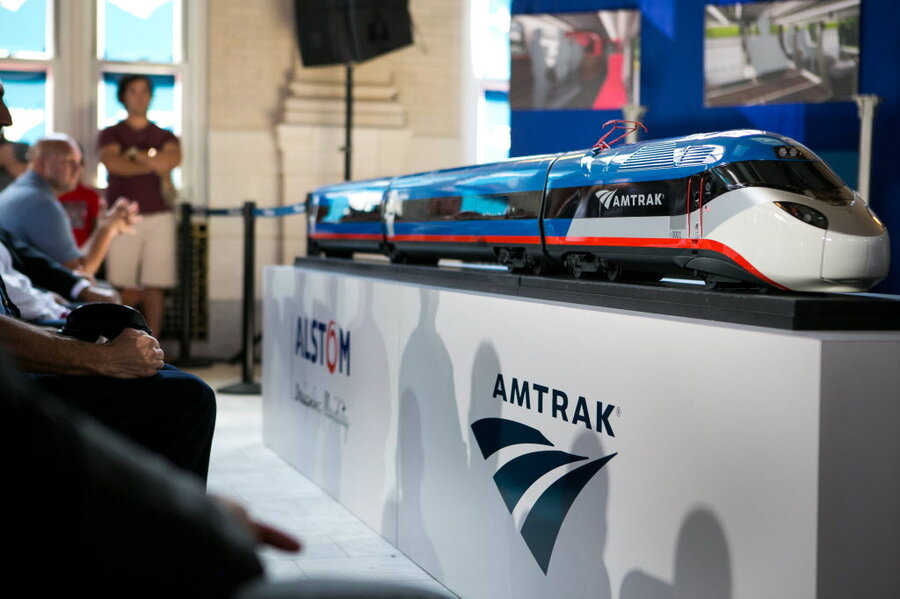With new trainsets, Amtrak hopes to pick up the pace
Loading...
By 2021, Amtrak says you will have a swifter and more comfortable ride from New York to Boston on Amtrak's 28 new Acela Express trains.
The 160-mile-per-hour ride will offer better WiFi, food service, and more outlets, says Amtrak, plus they are designed to hold 35 percent more passengers than the current trains. During peak hours, the expanded service is designed to allow trains between Washington DC and New York every half-hour and between New York and Boston every hour.
“As more people rely on Amtrak, we need modernized equipment and infrastructure to keep the region moving,” said Anthony Coscia, chair of the Amtrak Board of Directors, in a written statement.
The trains will be designed by Alstom, the company that created the TGV, France’s high-speed train capable of traveling 200 mph. The new Acela trains are designed to reach 186 mph, but will run at the track speed limit of 160 mph. Current Acela trains travel at 135 mph along most of the route, reaching 150 mph on a few stretches.
The train cars will weigh 30 percent less than Amtrak's current express service trains and will consume 20 percent less energy, says Amtrak.
The price tag on the project is $2.45 billion, largely funded by a federal loan aimed to improve infrastructure of the railroads, which have been struggling for a long time. It will also add about 1,000 jobs nationwide, according to Alstom. The loan is to be repaid through the growth in revenues from the Northeast Corridor, Amtrak says.
In addition to designing and building the new trains, Amtrak says the money will fund improving train stations and building tracks that will support high-speed trains.
The tracks are the main reason that high-speed trains, common in Japan, South Korea, and much of Europe for years, have not much of a made a foray into the United States. Amtrak relies on infrastructure designed for freight trains, which slows down the less profitable passenger train arm of its business model.
“The Northeast Corridor is a national economic engine that carries a workforce contributing $50 billion annually to the national GDP,” said Senator Cory Booker (D) of New Jersey to USA Today. “Amtrak’s continued investment in modernizing its fleet will only serve to enhance this vital rail link between Boston and Washington D.C., while allowing for safer and faster travel, at a time when passenger demand is expected to rise.”
Some are worried about Amtrak’s ability to repay the loan, since the company is already highly subsidized and rarely turns a profit.
"We need these kinds of investments to keep this region – and our whole country – moving, and to create jobs," Vice President Joe Biden said when he allocated the loans to Amtrak at the Joseph R. Biden, Jr. Railroad Station in Wilmington, Del.
According to Business Insider, a prototype of the new train will be ready in 2019 and a few will be on the tracks by 2021, with full service from all 28 trains by 2022.
[Editor's note: An earlier version of this story understated the expected travel time between Boston to New York on the new trains and neglected to note how the federal funding for the new trains will be repaid.]








